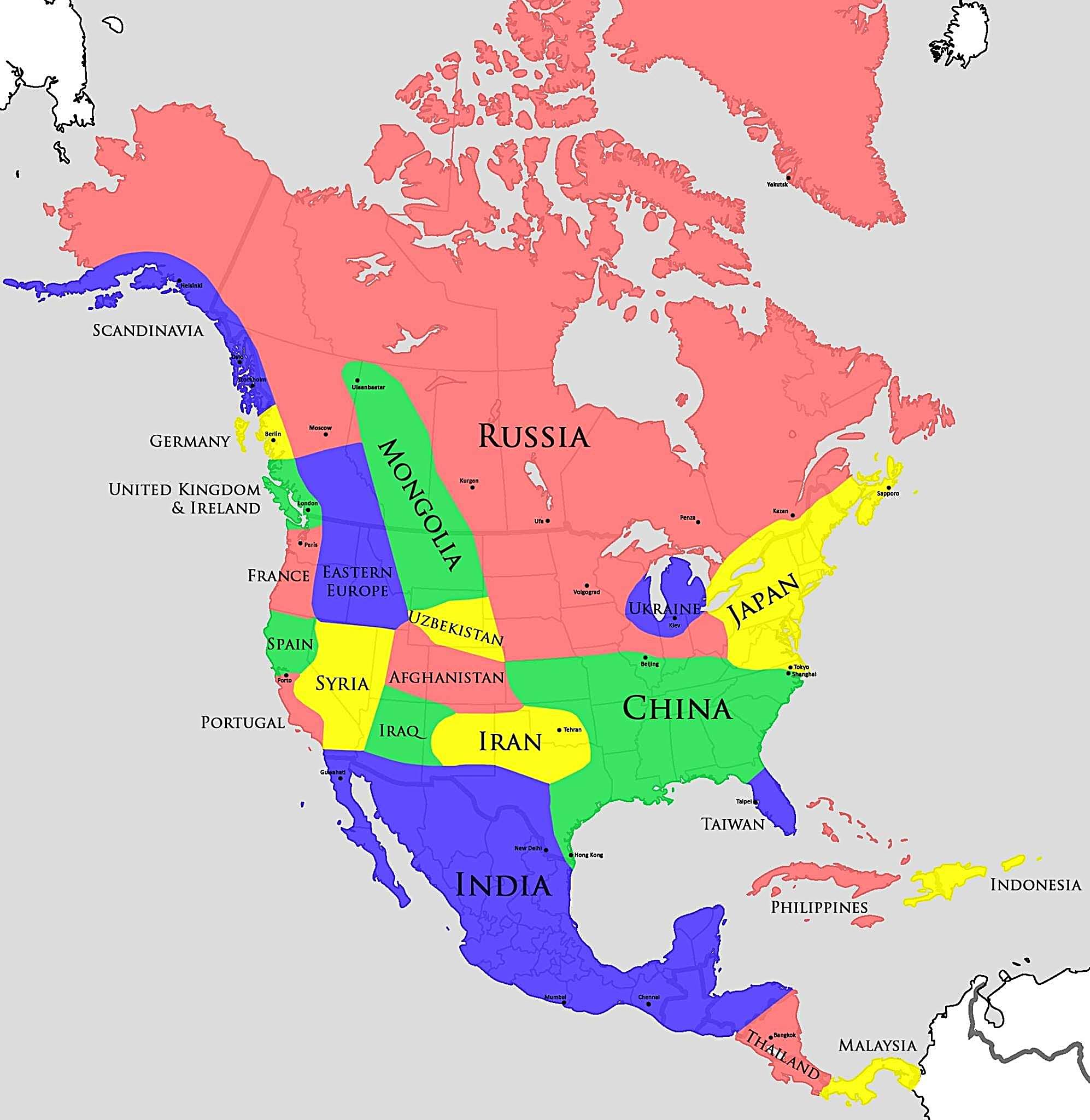Map by Reddit user TurbulentTruth
Ever wondered why Minneapolis winters feel so brutally cold while cities at the same latitude in Europe seem almost balmy by comparison?
This fascinating climate analog map reveals the surprising truth: North American cities often share more in common with places thousands of miles away in Asia than with their European counterparts.
When Geography Plays Tricks
The map shows us something remarkable about how the climate works across continents.
While you might expect New York to feel similar to Rome (they’re roughly the same latitude), New York’s climate actually mirrors regions much further north and east in Eurasia.
This isn’t just a quirky coincidence; it’s the result of massive ocean currents, continental positioning, and atmospheric patterns that shape our daily weather.
The Great Lakes Meet Mongolia
Look closely at the northern United States, and you’ll see it painted in the same colors as Mongolia and parts of Siberia.
Chicago’s bone-chilling winters suddenly make perfect sense when you realize the city shares climate characteristics with the Mongolian steppes.
Meanwhile, the Pacific Northwest finds its climate twin in regions of China, explaining why Seattle’s mild, wet conditions feel so different from the rest of the continent.
Why Europe Gets the Better Deal
Europeans often seem to have won the climate lottery, and this map explains why.
The Gulf Stream carries warm water from the Caribbean all the way to Western Europe, keeping places like London and Paris surprisingly mild despite their northern latitudes.
North America lacks this massive climate modifier, leaving cities like Toronto to endure Siberian-style winters instead of the relatively gentle European conditions you might expect.
Heat and Humidity: The Southern Story
The southern United States tells its own climate story.
Florida and the Gulf Coast share their subtropical characteristics with parts of Iran and the Middle East, while Southern California’s Mediterranean climate finds its match in regions around the actual Mediterranean Sea and parts of Afghanistan.
These connections help explain everything from agricultural patterns to the types of plants that thrive in each region.
What This Means for You
Understanding these climate twins can help explain why certain plants thrive in your garden, why your heating bills rival those of someone living in Central Asia, or why that European vacation felt so surprisingly mild. It also offers insights into what climate change might bring: as global temperatures shift, these analog relationships could change, potentially making your hometown feel more like a completely different part of the world.
Next time someone complains about the weather, you can impress them with the knowledge that they’re essentially experiencing the climate of Mongolia, China, or the Middle East, depending on where they call home.
Help us out by sharing this map:
